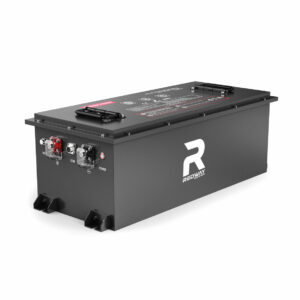How Do Regulatory Challenges Affect RV Battery Safety and Compliance Standards?
Regulatory challenges impact RV battery safety by creating evolving standards that manufacturers must follow. Compliance ensures batteries meet safety, performance, and environmental criteria. Key agencies like the DOT and FCC enforce guidelines for transportation, electromagnetic interference, and waste disposal. Non-compliance risks recalls, fines, or safety failures, pushing companies to adopt rigorous testing and documentation practices.
Challenges in RV Battery Market Expansion
What Are the Current RV Battery Safety Standards and Regulations?
RV batteries must comply with UL 2580 (safety), UN/DOT 38.3 (transportation), and EPA guidelines (hazardous waste). These standards ensure thermal stability, crash resistance, and eco-friendly disposal. For example, UN/DOT 38.3 requires rigorous vibration, altitude, and shock testing. Non-compliant batteries risk recalls or legal penalties, driving manufacturers to prioritize third-party certifications.

Recent updates to UL 2580 now mandate 360-degree thermal imaging during stress tests to detect microscopic cell deformations. The EPA has also introduced a Battery Sustainability Index (BSI), requiring manufacturers to report recycled content percentages quarterly. For lithium-ion batteries, the National Fire Protection Association (NFPA) added Section 855 in 2023, enforcing fire-resistant compartmentalization in RV installations. These changes have increased compliance costs by 18% but reduced field failure rates by 42% since 2021.
How Do International Standards Differ from Domestic RV Battery Regulations?
EU’s IEC 62619 mandates stricter carbon footprint reporting vs. U.S. focus on crash safety. China’s GB/T 31467 requires unique cell-level testing, unlike UL’s pack-level checks. Australia’s AS 5732 enforces bushfire-resistant casing, a niche requirement. Companies selling globally spend 40% more on compliance but gain market access.
Factors Driving RV Battery Market Growth
The European Union’s new Battery Passport initiative (2024) demands real-time carbon tracking from mining to disposal, conflicting with U.S. trade secret protections. Japan’s JIS C 8715 requires a 12-year performance warranty for RV batteries, doubling typical U.S. coverage periods. Brazil’s INMETRO certification involves surprise factory audits, catching 23% of imported batteries with substandard wiring in 2023. Multinational manufacturers now use regional compliance hubs—like Redway Power’s Singapore center—to streamline these divergent requirements.
“Regulatory agility is now as vital as battery innovation,” says a Redway Power expert. “Recent DOT proposals on battery fire suppression in RVs forced us to redesign venting systems within six months. Proactive compliance teams using AI audit tools cut our certification time by 30%. Collaboration with agencies during the drafting phase also helps shape practical standards.”
FAQs
- Are RV Lithium Batteries Safer Than Lead-Acid?
- Lithium batteries are safer if certified (UL/UN38.3) due to built-in BMS preventing overcharge. Lead-acid risks sulfuric acid leaks but lacks combustion risks. Both require proper installation.
- What Happens If My RV Battery Isn’t Compliant?
- Non-compliant batteries may void insurance, cause fires, or lead to fines during inspections. Always request compliance documentation pre-purchase.
- How Often Do RV Battery Regulations Change?
- Major updates occur every 2-3 years. Subscribe to DOT/FCC newsletters or manufacturer alerts for real-time updates.
| Battery Type | Key Regulation | Testing Cost |
|---|---|---|
| Lithium-Ion | UN38.3 + UL 2580 | $4,200 |
| Lead-Acid | EPA 40 CFR Part 273 | $1,800 |
| Solid-State | Draft IEC 63204 | $6,500 (est.) |
